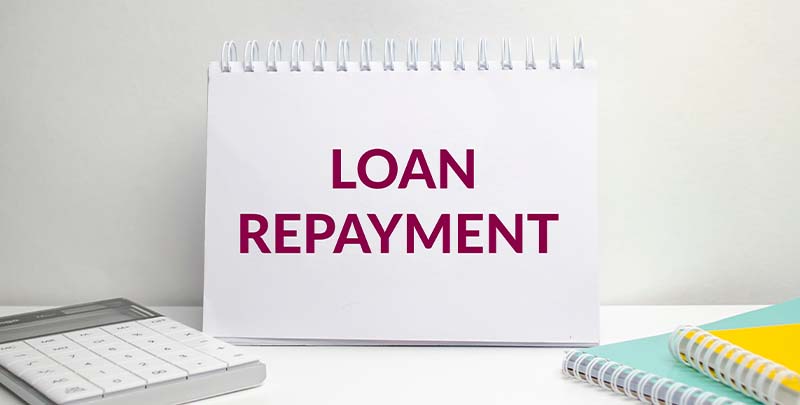- Accounts
- Deposits
- Cards
- Forex
Send Money AbroadSend Money to India
- Loans
24x7 Loan
- Investments
- Insurance
General InsuranceHealth Insurance
- Payments
- Open digital A/C
Explore 250+ banking services on Axis Mobile App
Scan to Download
- Current Account
- Pay
- Collect
- Trade
Services
Solution for Exporters
- Debt & Working Capital
24x7 Loans
For MSMEs with turnover up to ₹30 Cr
- Treasury
- Transact Digitally
- Home
- Blogs
- Generic Guide
- What Is Loan Repayment

Generic
What is Loan repayment?
Loan repayment is when you give back the money you borrowed from a bank or someone else according to the agreed-upon terms. Understanding loan repayment is crucial for managing expenses effectively and avoiding failure on terms. The terms depend on various factors,, such as the loan duration, interest rates, and payment frequency.
Loan repayment meaning
When you borrow money, you agree to pay it back gradually over time. Each time you make a payment, part of it goes to the original amount you borrowed (principal), and part goes as a 'thank you' fee, called interest, for letting you borrow. You must repay until the full amount (principal + interest) is returned. If you don’t pay on time, you might have to pay extra, which could affect your ability to borrow money in the future.
Understanding the basics of loans
1. Principal amount
It is the original amount you borrowed from a lender. Your interest is calculated based on this base amount. It directly affects the total repayment amount and interest paid over the specific duration.
2. Interest rate
The interest rate is the cost of borrowing money, expressed as a percentage of the principal amount. It can be fixed throughout the loan period or change according to market conditions. Interest rates directly influence the total loan amount and monthly instalments.
3. Loan tenure
It is the total duration within which you agree to repay. Tenure directly depends on the type of loan taken and lender policies. A longer tenure results in lower monthly payments but may increase the total interest paid, while a shorter tenure can lead to higher payments but lesser overall interest.
4. Number of instalments
The number of instalments refers to how many times you agreed to repay the loan in monthly instalments. This helps manage your cash flow effectively throughout the loan period.
Types of loan repayment
1. EMIs
- You need to pay fixed monthly instalments that include both principal and interest.
- EMIs are generally used to pay off Personal, Home, Auto Loans, etc.
- It is generally used for longer periods to manage debt repayment easily without financial strain.
2. Bullet payments
- During the loan tenure, you only need to pay the interest.
- The principal amount is repaid in one large payment at the end of the loan term.
- Bullet payment is used for short-term loans or specific financial products like Bonds.
Factors affecting loan repayment
- Income stability: A steady income ensures you can make regular payments without financial strain. So, a longer job guarantee, and salary are important for deciding various terms of loans.
- Interest rates: Higher interest rates increase monthly payments, making it more difficult. You should consider less interest rate-based loans.
- Loan amount and tenure: Large loans with longer durations can lead to higher total interest costs, affecting repayment capacity.
- Credit history: A strong credit history can lead to better loan terms, while a poor history may result in higher rates and stricter repayment conditions.
Also Read: Personal Loan Statement: 3 Quick Ways To Check
Conclusion
For effective financial management, you should learn all aspects of loans, such as repayment methods, influencing factors, etc. Whether opting for EMIs or bullet payments, you should actively consider your financial situation and repayment capacity. With these informed decisions, you can ensure timely repayments and maintain a healthy credit profile for future requirements. Consider Axis Bank's Personal Loan, which offer up to ₹40 lakh with flexible repayment options and competitive interest rates starting at 11% p.a.
Disclaimer: This article is for information purpose only. The views expressed in this article are personal and do not necessarily constitute the views of Axis Bank Ltd. and its employees. Axis Bank Ltd. and/or the author shall not be responsible for any direct / indirect loss or liability incurred by the reader for taking any financial decisions based on the contents and information. Please consult your financial advisor before making any financial decision.
Table of Contents
Related Services
Learning Hub
Look through our knowledge section for helpful blogs and articles.













